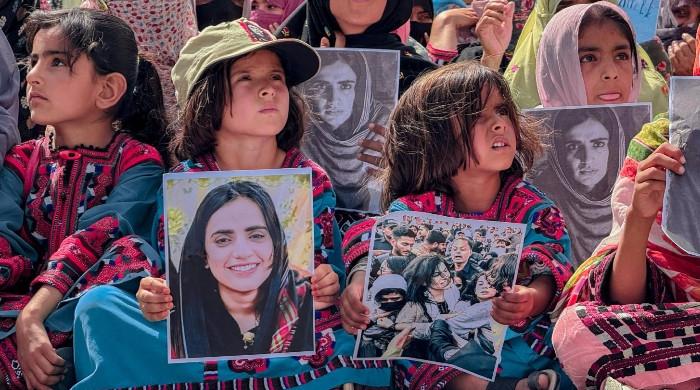Pakistan at 75: Where do we go from here?
During the last 75 years, customised versions of economic models were experimented with in Pakistan
August 13, 2022

To think about independence on its 75th anniversary, without the teething problems that Pakistan inherited due to a poorly planned and brutally carried out — rather rushed — Partition, will not do justice to the economic resilience that this nascent country and its people showed during its formative years.
How far may this resilience take us in the foreseeable future? The answer to this question is premised on certain factors found, or missing, around us. Although overlapping, I categorise these factors as ‘megatrends’ and ‘game changers’. The former are visibly and verifiably present in today’s Pakistan. The latter are natural or human-made circumstances that determine whether the ‘megatrends’ lead to positive change or negative outcomes.
Megatrends can only be understood in a historical context, so let us quickly recap Pakistan’s politico-economic history.
First, it would not be wrong to say that during the last 75 years, customised versions of different economic models — ranging from a regulated economy (of the 1950s), industrialisation and green revolution (1960s), nationalisation (1970s), Islamisation (1980s), liberalisation (1990s), and half-hearted economic reforms (in the last two decades) — were experimented in Pakistan under different forms of civil, military, and hybrid arrangements of governance.
Second, the economy of Pakistan has chronically remained hostage to political instability. This political instability gave initial stability to all four military governments. However, as life would have it, our democratically elected rulers tended to turn into dictators, whereas ‘dictators’ wanted to be seen as democrats.
As a result, Pakistan could neither get a true democratic nor an actual dictatorial regime. Consequently, successive governments resorted to populist measures, sweeping the need for socioeconomic reforms under the carpet.
Third, two decades of easy inflow of external assistance (dollars) due to geo-strategic reasons, under Gen Ziaul Haq and Gen Pervez Musharraf’s regimes, promoted a false sense that the economy could indefinitely run on consumption-led, import-based growth and could afford to ignore the current account and fiscal deficits.
Fourth, despite a manifold increase in the GDP and an increase in population by seven times since 1947, Pakistan’s expenditure on education and health as a percentage of GDP remained almost static (below 2% on education and below 1.25% on health).
Consequently, although Pakistan has improved its performance in UN Human Development Index (HDI), it is still 13% lower than the average HDI of South Asia (only better than Afghanistan). Poor spending on education also resulted in a situation where without upgrading the human resources that could match the demands of the services sector, Pakistan graduated from an agro-based economy to a services-based economy. Agriculture is absorbing double the workforce (40%) than its contribution to the GDP (20%). This mismatch is resulting in lower productivity and income inequality across our economy.
Let us see where Pakistan stands today (the megatrends) given the above historical context. It is the fifth most populous country in the world, with a population of 224.78 million (Pakistan Economic Survey, 2021-22). Two out of every five persons in Pakistan are below the age of 15, whereas three out of every ten are between 15 and 29.
Half of them are women, who, despite structural exclusion, are increasingly marking their footprints and playing a vital role in Pakistan’s development. Most Pakistanis of working age are migrating both within the country and to other parts of the world (the latter are an important source of precious remittances).
Increased individual empowerment is the second megatrend in Pakistan. Our individuals are more empowered today than they were a few decades ago. Albeit increased economic inequality, the number of people living in abject poverty has decreased, the literacy rate has improved, and so has life expectancy at birth.
The internet, smartphones, and social media have made information (and disinformation) much more accessible than we had ever imagined. People are more aware of their rights and are empowered enough to challenge the status quo. They are candid in expressing their socio-political likings and disliking. These trends are reminders that one cannot ignore individual ownership while taking any initiative about Pakistan’s future.
Increased individual empowerment, in turn, is facilitating the decentralization of power centres. Today’s Pakistan has come out of the risk of a coup d’etat. New power centers: parliament, the superior judiciary, the corporate-owned media, more autonomous provinces, the corporate world, and a vibrant civil society are contesting for their space in decision-making. Their alignments (or misalignments) and alliances (or differences) will significantly determine Pakistan’s future.
Unprecedented consumerism is another megatrend in today’s Pakistan. One can think of any major international brand of consumer goods and it would be available in Pakistan. The cost of consumer goods is an important component of its import bill and adds to its trade deficit. Businesses are responding to consumer culture and are redefining Pakistan’s social fabric, at least in urban centers.
Still, another megatrend is societal heterogeneity. Pakistan’s society is highly polarized and divided across all possible fissures and fault lines, political, economic, ethnic, sectarian, provincial, etc. The level of tolerance and mutual acceptance has considerably decreased today. A few groups claiming to be self-righteous are resorting to trolling, mob justice, mob lynching, and revenge-seeking in different guises — street crime, honour killing, political differences, or blasphemy.
On the natural resources front, water is getting scarce, whereas food and energy are becoming expensive. Managing water and food energy amidst climate change has become a real challenge. Due to the competing water demands, at a given point in time, a considerable percentage of Pakistan’s population is either food insecure, water insecure, or energy insecure.
All of the above affects Pakistan’s economy, reflecting a boon and burst phenomenon where macro-economic stability and microeconomic relief have become paradoxes.
In no particular order, Pakistan’s position in the emerging geostrategic world order, which is being crafted by the competing interests of the US, Russia and China; shifting to renewable energy; climate change adaptation; readiness to improve the quality of economic growth through upgrading human resources and adaptation of new technologies; openness and transparency; and policy on promoting societal tolerance are some of the game changers that may turn the megatrends mentioned above to be either a boon or bane.
These game changers are defining the economic, social, geopolitical, and environmental pathways for the foreseeable future of Pakistan.
It can be argued that during the last 75 years, on the whole, Pakistan’s economic policies produced many winners — poverty and illiteracy levels have come down, and health indicators are improving.
Going forward, opportunities offered by emerging geostrategic world order, renewable energy sources, and innovative technology, if utilized transparently and judiciously, may result in sustainable and inclusive economic growth. This growth would help use the youth bulge positively with more hands to earn and fewer mouths to feed.
Now reverse the situation, and one will see how a non-inclusive economic growth that benefits only privileged individuals would turn the megatrends in a negative way. It is important to note that societal perception of exclusion and marginalization will bring impatience and restlessness not only among highly charged (under-and-or unemployed) youth but also in emerging power centres. In such circumstances, these actors, instead of becoming a part of the solution by providing political and intellectual leadership in driving the economy and the country out of the troubled waters, would turn the situation worse with half-baked ideas and less than practical demands.
A non-performing economy would also directly affect the state’s ability to provide basic services such as health and education. This would not only further marginalize the excluded ones but also pave the way for extremist groups to expand their influence through their humanitarian wings.
On its 75th independence anniversary, the choice is with us, the citizens of Pakistan. We may not have control over megatrends, but can certainly influence the game changers in a way that they affect these trends in a positive manner and, if not leading to a best-case scenario, may at least do better than business-as-usual. This is a common dream for many of us and a pathway to sustainable development for our future generations.
The writer heads the Sustainable Development Policy Institute. Twitter: @abidsuleri
Originally published in The News











